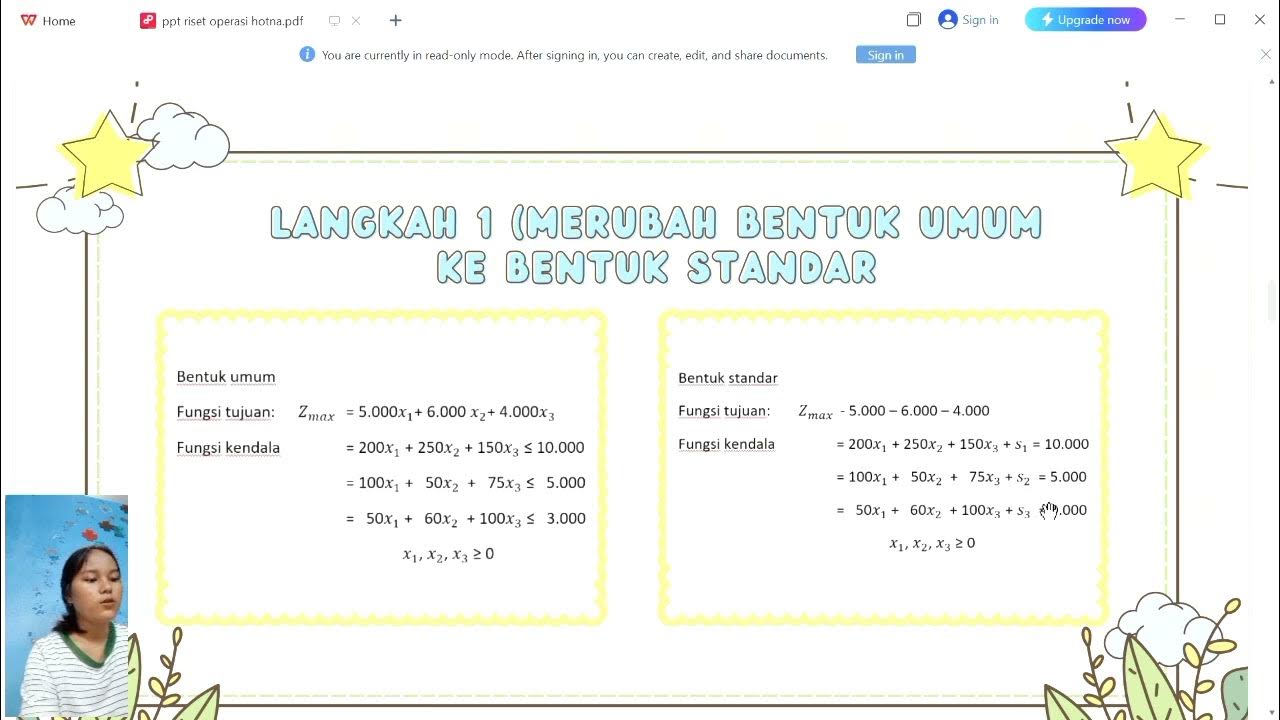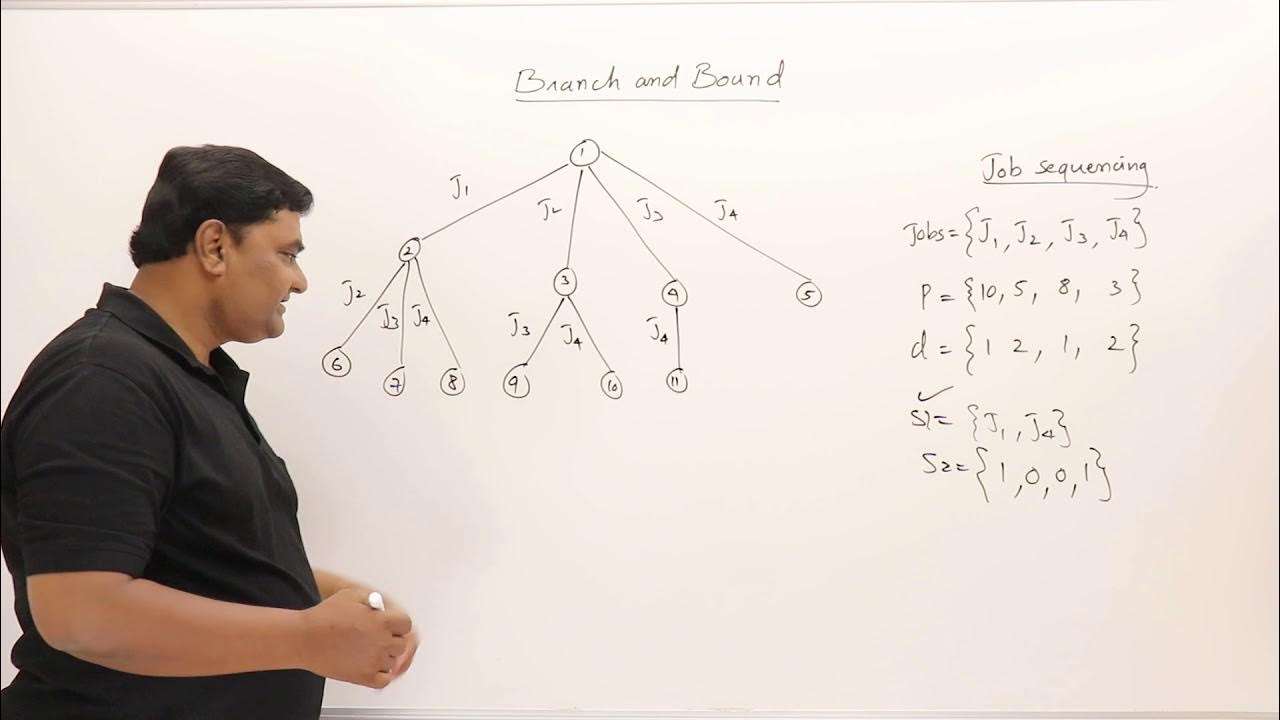METODE BIAYA TERENDAH - GREEDY - LEAST COST - Transportasi - Program Linear - GASS MATEMATIKA
Summary
TLDRIn this video, the Least Cost Method (Greedy Method) is used to solve a transportation problem involving a sausage factory with three production locations and three markets. The method begins by selecting the smallest transportation costs and allocating shipments accordingly, updating supply and demand as it progresses. The total cost is then calculated, though it’s noted that this solution may not be optimal. Viewers are encouraged to explore other methods like Stepping-Stone for optimization. The video offers an insightful approach to solving transportation problems efficiently and cost-effectively.
Takeaways
- 😀 The video explains how to solve a transportation problem using the lowest cost method (Greedy method).
- 😀 The transportation problem involves three sausage factory locations with different production capacities and three markets with specific demands.
- 😀 The method starts by allocating supply based on the lowest transportation cost, as indicated in a table.
- 😀 The first step is to look at the transportation cost table and find the smallest cost. In this case, it's 4, which is selected for allocation.
- 😀 Each allocation is made while ensuring that the supply from the factory matches the demand from the market.
- 😀 After allocating 200 units to the first market, the remaining supply and demand are updated accordingly, and the next smallest cost is selected for the next allocation.
- 😀 The Greedy method follows a sequence of steps to minimize transportation costs, but it does not necessarily guarantee an optimal solution.
- 😀 After completing the allocations, the total transportation cost is calculated to determine the result. In this case, Z = 4550.
- 😀 The solution obtained using the lowest cost method is a feasible solution, though it may not always be optimal. Optimization is typically verified using other methods like the stepping-stone method.
- 😀 The video emphasizes that different methods, such as the northwest corner method and the lowest cost method, yield different results for the same problem.
- 😀 The presenter encourages viewers to like, comment, subscribe, and share the video with others for educational purposes.
Q & A
What is the main objective of the video?
-The main objective of the video is to explain how to solve a transportation problem using the Greedy method, also known as the lowest cost method, in linear programming.
What is the scenario described in the problem?
-The problem describes a sausage factory with three production locations, each producing different quantities, which needs to deliver products to three markets with specific demands.
What are the production capacities of the sausage factory's three locations?
-The production capacities of the sausage factory’s three locations are 150, 175, and 275 units, respectively.
What are the demands of the three markets?
-The demands of the three markets are 200, 100, and 300 units, respectively.
What is the cost of transportation between the factory and the markets?
-The transportation costs are given in thousands of Indonesian Rupiah (Rp). The first cost is 6,000 for the first market, with other costs varying for each route.
How does the Greedy method (lowest cost method) work in this case?
-The Greedy method works by selecting the lowest transportation cost at each step. It starts with the smallest cost, allocates as much as possible, and then moves to the next lowest cost route.
What was the smallest cost in the transportation table?
-The smallest cost in the transportation table was 4,000 (Rp 4,000), which was used as the starting point for allocations.
What does the process of filling the transportation table involve?
-The process involves checking the available supply and demand, selecting the lowest cost for allocation, adjusting the remaining supply and demand, and repeating the process until all supply and demand are satisfied.
What is the total cost (Z) of the transportation plan?
-The total cost (Z) is calculated as the sum of the products of units transported and their respective costs, which equals 4,550.
Why is this solution not necessarily the optimal one?
-This solution is not necessarily optimal because the Greedy method does not always provide the most cost-effective allocation. To check for optimality, the solution would need to be verified using methods like the Stepping-Stone method.
Outlines

This section is available to paid users only. Please upgrade to access this part.
Upgrade NowMindmap

This section is available to paid users only. Please upgrade to access this part.
Upgrade NowKeywords

This section is available to paid users only. Please upgrade to access this part.
Upgrade NowHighlights

This section is available to paid users only. Please upgrade to access this part.
Upgrade NowTranscripts

This section is available to paid users only. Please upgrade to access this part.
Upgrade NowBrowse More Related Video

Least Cost Cell Method | In case of Tie | Transportation Problem in Operations research | Kauserwise

Problem Solving using Polya's 4 step method|Tano, Arjyll B.

Program Linear Metode Simpleks Soal Cerita 3 Variabel

7 Branch and Bound Introduction

FRAÇÃO | ADIÇÃO e SUBTRAÇÃO de FRAÇÕES. Método convencional e o método BORBOLETA

Menghitung Dengan Aplikasi POM-QM Menggunakan Transportation Method (Metode Transportasi)
5.0 / 5 (0 votes)